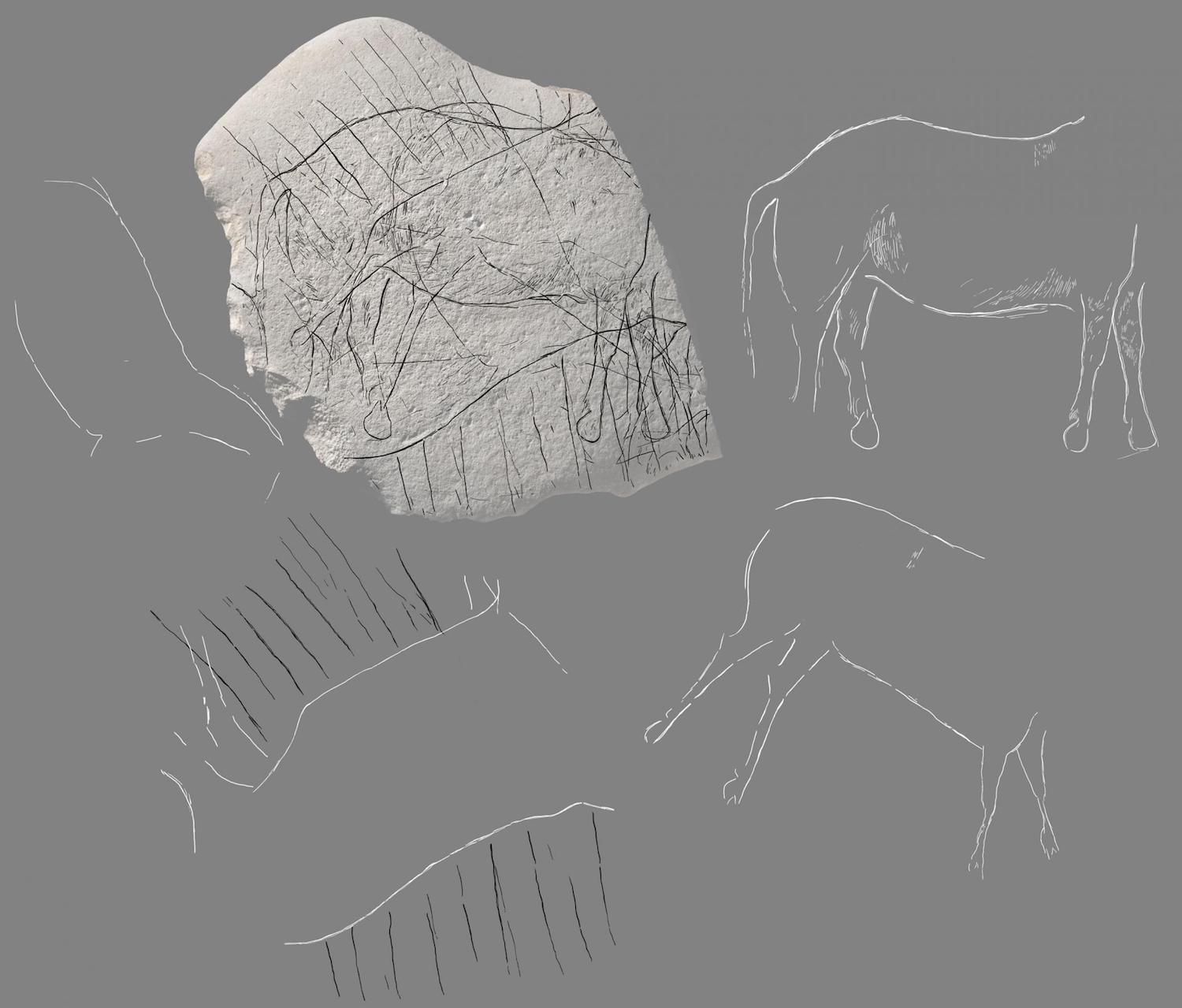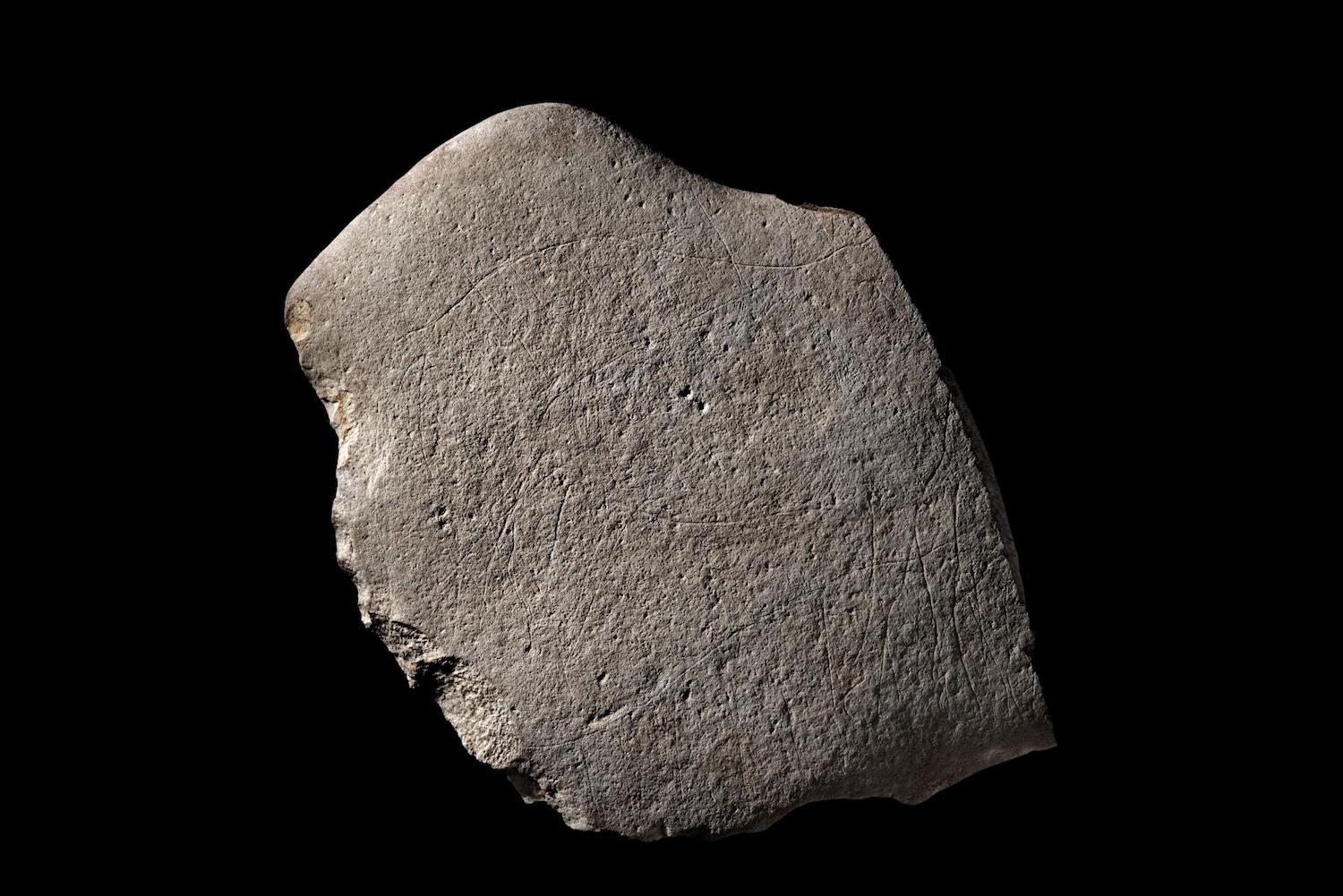12,000-Year-Old 'Headless' Horse Engraving Discovered in France

Archaeologists have discovered 12,000-year-old engravings of a horse and four other animals etched by Stone Age artists into sandstone in what is now southwestern France.
Geometric decorations surround the animals on the sandstone engraving, a telltale sign that whoever made them was part of the Azilian industry, a tool tradition in Europe that thrived during the late Paleolithic and early Mesolithic, during which small stone tools were fit into handles made of bone or antler. (The Paleolithic is also known as the Old Stone Age, while the Mesolithic is the Middle Stone Age.)
The sandstone slab is now broken, so the horse — which covers about half of the stone block — is headless. The horse's four legs and three hooves "are very realistic," the National Archaeological Research Institute (Inrap) said in a translated statement. [Photos: Ancient Rock Art of Southern Africa]
Alongside the headless horse are two, slightly smaller engravings of animals — likely a species of deer and another horse. The outline of an aurochs, an extinct species of wild cattle, is also visible. On the other side of the stone slab are fine lines delineating a horse rump.

Archaeologists found the hefty slab — which is 10 inches tall and 7 inches wide (25 by 18 centimeters) — during excavations near the Angoulême train station, north of Bordeaux. This site was once used by prehistoric Azilian hunters, according to previous discoveries of ancient equipment, such as stone scrapers, found there that would have helped Paleolithic people prepare and eat meat.
Earlier digs have also revealed fireplaces, piles of pebbles that could have been heated for cooking purposes and animal bones. Moreover, archaeologists have unearthed arrowheads and cut flints from this site, Inrap said.
The newly discovered animal engravings will be presented to the public at a local exhibit on June 15.
Sign up for the Live Science daily newsletter now
Get the world’s most fascinating discoveries delivered straight to your inbox.
- Photos: Rock Art May Depict One of First Volcanic Eruptions That Humans Ever Drew
- Photos: 'Winged Monster' Rock Art in Black Dragon Canyon
- In Photos: Cave Art from Mona Island
Originally published on Live Science.

Laura is the archaeology and Life's Little Mysteries editor at Live Science. She also reports on general science, including paleontology. Her work has appeared in The New York Times, Scholastic, Popular Science and Spectrum, a site on autism research. She has won multiple awards from the Society of Professional Journalists and the Washington Newspaper Publishers Association for her reporting at a weekly newspaper near Seattle. Laura holds a bachelor's degree in English literature and psychology from Washington University in St. Louis and a master's degree in science writing from NYU.









